Transforming your outdoor spaces into lush, vibrant sanctuaries can be as simple as selecting the right plants. Trailing and hanging plants offer a unique charm, cascading elegantly from baskets or spilling over containers, creating an eye-catching display that elevates any garden or balcony.
However, choosing the perfect species requires more than just aesthetic consideration; it’s crucial to select plants that will thrive in your local climate and environment.
By understanding the specific needs of trailing plants—whether they flourish in full sun or prefer a bit of shade—you can avoid common pitfalls and ensure your green investments prosper. Tailoring your choices to suit the conditions they’ll face not only guarantees a healthier garden but also transforms your space into a year-round haven of tranquillity and beauty.
Ready to learn which trailing plants will turn your hanging baskets into stunning focal points? Let’s explore how you can achieve this with ease.
Popular Types of Trailing and Hanging Plants
Transforming your outdoor or indoor space with trailing and hanging plants adds a dynamic touch to your décor. Here are some top picks you can consider for that perfect verdant cascade.
Philodendron Varieties
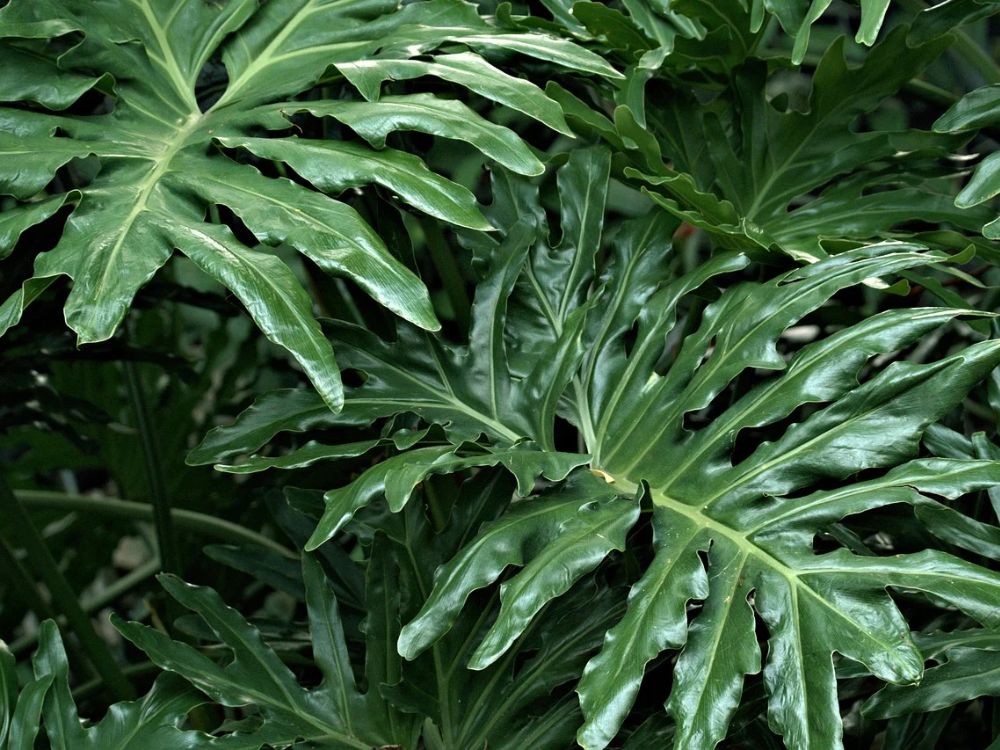
Philodendrons are versatile, easy to care for, and thrive in indirect light making them ideal for indoor settings. The heartleaf philodreon (Philodendron scandens) is particularly popular due to its lush, green leaves that gracefully spill over the sides of containers.
Ceropegia woodii (Chain of Hearts)
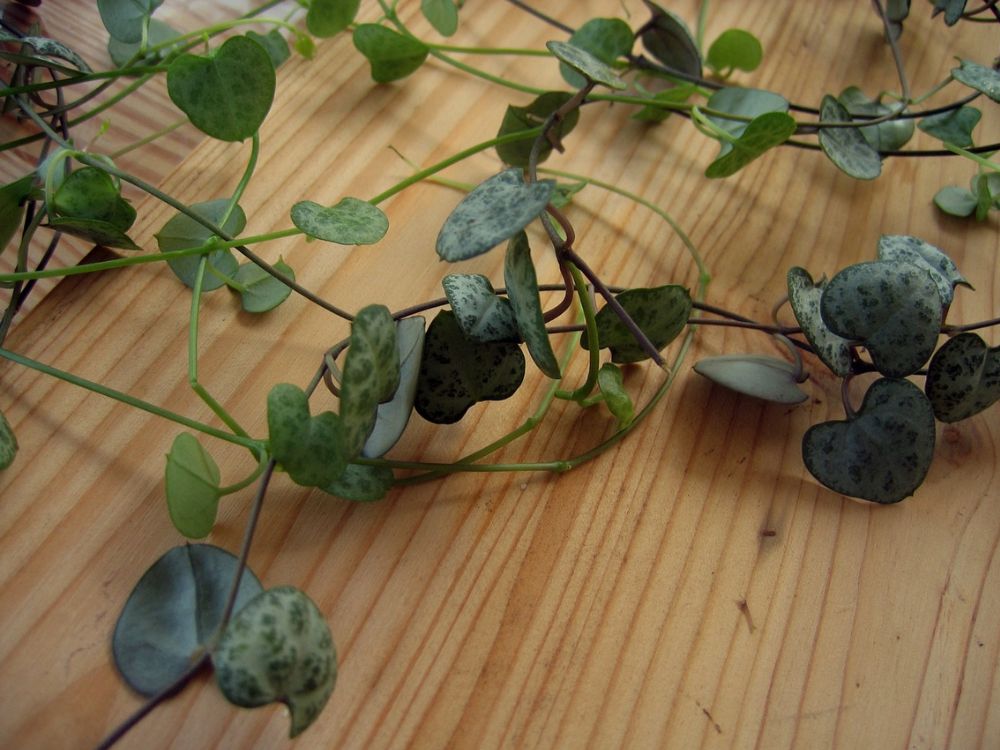
The Chain of Hearts enchants with its long, trailing vines adorned with heart-shaped leaves marked by a delicate pattern. It’s quite resilient and thrives well in bright, indirect sunlight.
Chlorophytum comosum (Spider Plant)

Its cascading, arching leaves with white stripes bring a touch of elegance. Plus, spiderettes (baby spider plants) sprout on long stems, which can drape down from a hanging basket or pot.
These cascading plants are easy on beginners too, tolerating a range of light and needing just regular watering.
Rhipsalis Species

Rhipsalis brings a unique texture to hanging baskets with its thin, noodle-like stems that drape beautifully. This cactus prefers bright but filtered light and minimal watering.
String of Pearls (Senecio rowleyanus)
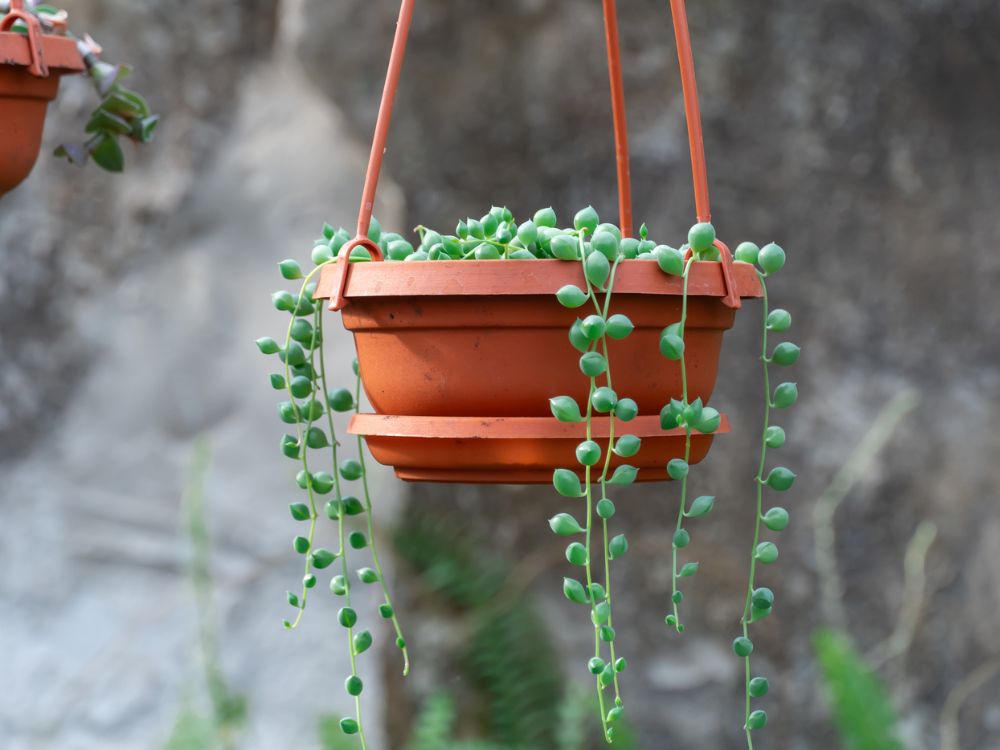
This succulent features small pea-like balls strung along tendrils that cascade elegantly from pots and baskets. The String of Pearls requires plenty of light but little water to flourish indoors.
Pothos (Epipremnum aureum)

Pothos plants are hardy vines that adapt to various lighting conditions though they prefer moderate indirect light. They grow quickly, offering lush foliage that trails attractively in any setting.
Tradescantia zebrina (Wandering Jew)
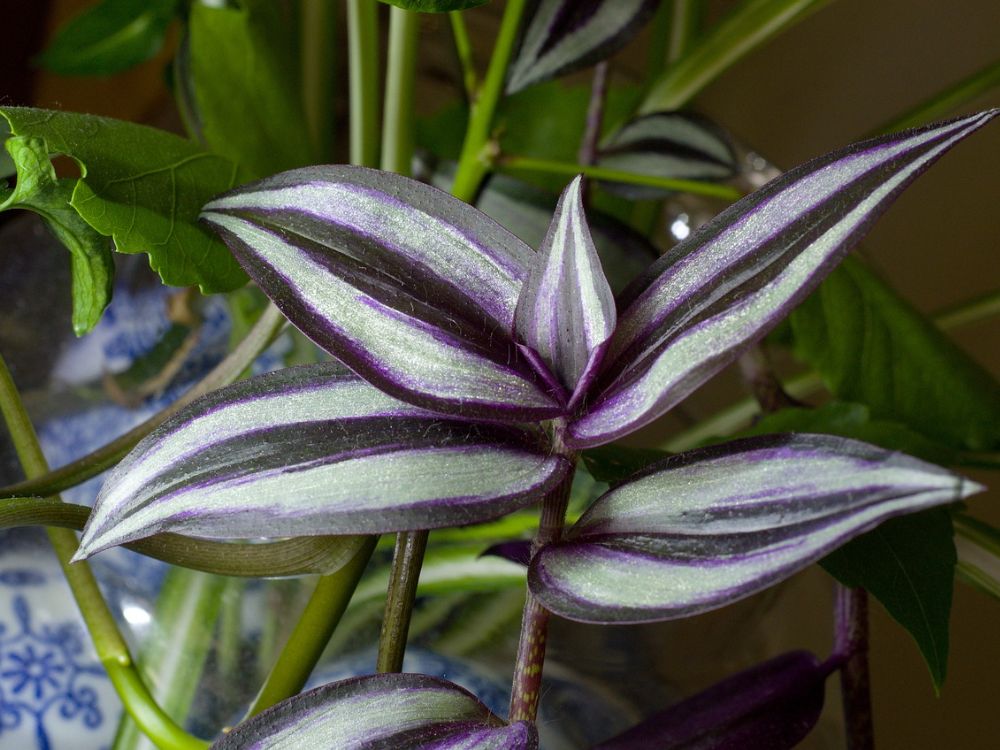
With striking purple undersides on silver-green leaves this fast-growing plant creates a dramatic visual effect when hung up or draped across shelves where it catches the light just right.
Hoya Carnosa (Wax Plant)

Famed for its waxy foliage and star-shaped flowers, the Hoya Carnosa is best placed where it can receive bright but indirect sunlight which encourages blooming—adding both colour and fragrance to your space.
Dischidia nummularia (String of Nickels)
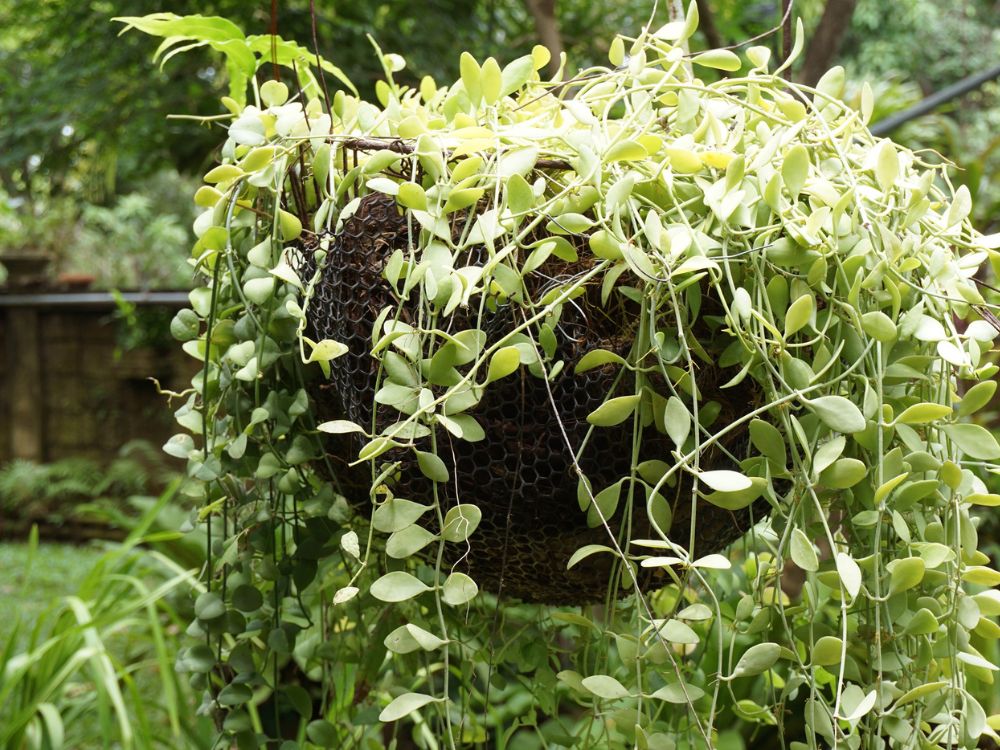
Its coin-shaped leaves give Dischidia nummuralia the nickname “String Of Nickels.” Ideal for small spaces where horizontal room may well be limited; it needs only moderate care like occasional watering and some soft sunlight.
Asparagus Fern (Asparagus densiflorus)
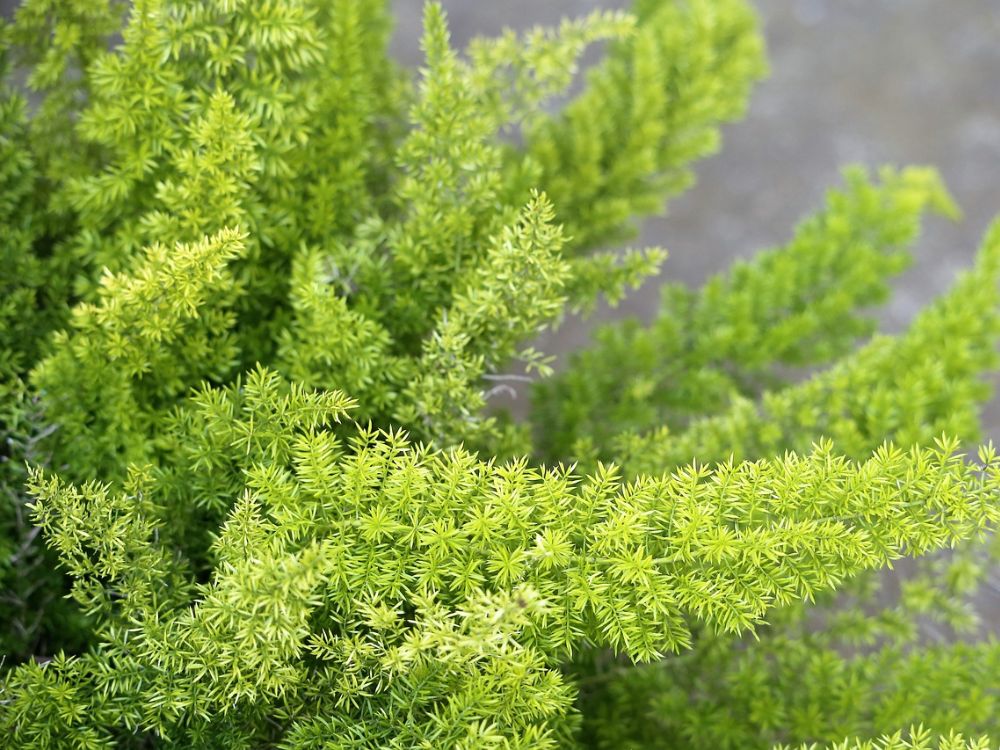
It’s a versatile plant with graceful, arching stems covered in airy, fern-like foliage. These needle-like cladodes (modified stems) create a soft, feathery texture that looks great, cascading from a hanging basket or pot.
These Australian landscaping plants are also tolerant of a range of light conditions and don’t require too much watering, making them perfect for beginner plant owners.
Columnea gloriosa (Goldfish Plant)
Named after its orange blossoms resembling goldfish mid-leap; this plant enjoys high humidity levels similar to tropical climates making it perfect as an eye-catching bathroom companion as well as shaded patios outside.
Peperomia rotundifolia (Trailing Jade)

Compact yet robust in growth—the Trailing Jade sports round succulent leaves along creeping stems. It’s great for those who appreciate subtlety in their houseplants requiring minimal fuss while still bringing greenery into the home environment.
Selecting the Right Plants for Your Space
Choosing the right trailing and hanging plants for your space can elevate your environment to a lush green haven.
Considerations for Light and Space
When picking out trailing or hanging plants, assessing the light availability in your space is crucial. Plants like Philodendrons and Pothos thrive in moderate to bright indirect light, making them perfect for rooms with large windows.
However, if you’re dealing with low-light areas, species such as the Spider Plant or Wandering Jew will be more forgiving. Also, consider the spatial requirements of each plant; some may well need ample room to cascade freely without getting tangled or cramped.
Temperature and Humidity Requirements
Trailing plants not only beautify your space but also have specific environmental needs. Most varieties prefer a consistently warm temperature ranging from 18°C to 24°C. Humidity levels are also vital; tropical species like Rhipsalis require higher humidity and benefit from regular misting.
Conversely, succulent types such as String of Pearls need less moisture in the air. Remember that sudden temperature shifts near windows or vents can stress these delicate plants, so placement should be thoughtfully planned.
Essential Care Tips for Trailing and Hanging Plants
Taking care of trailing and hanging plants can significantly enhance the beauty and vitality of your indoor garden. Here are some essential tips to help you maintain these lovely plants effectively.
Watering Do’s and Don’ts
Watering your trailing plants correctly is crucial. Always check the topsoil; if it’s dry to touch about an inch deep, it’s time to water.
However, avoid overwatering as it can lead to root rot, a common issue with succulents like Burro’s Tail. During winter, reduce watering frequency since the plant growth slows down.
Understanding Fertilisation Needs
Trailing plants need the right nutrients to flourish. Fertilise them during the growing season (spring to summer) using a balanced liquid fertilizer diluted by half every 4-6 weeks. Avoid feeding during dormant periods in autumn and winter, as this can stress the plants unnecessarily.
Pruning and Maintenance Tips
Regular pruning helps maintain these plants’ lush appearance and prevents tangling. For species like Philodendron Micans, snip off any yellow or dead leaves at the base using sterile scissors.
This not only tidies up your plant but also encourages healthier growth by focusing energy on new foliage development.
Common Issues and Solutions in Caring for Hanging Plants
Caring for hanging plants can be rewarding, yet you may well face a few challenges along the way. Here’s how to address common issues effectively.
Pest Management Strategies
Dealing with pests is crucial for maintaining healthy hanging plants. Spider mites, aphids, and mealybugs are frequent culprits. To combat these pests, start by regularly checking the undersides of leaves and stems where they often hide.
If you spot pests, wash them off with a strong stream of water or use insecticidal soap as a safe treatment option. For severe infestations, neem oil can be an effective organic solution that disrupts the life cycle of pests without harming your plant or the environment.
Dealing with Common Diseases
Fungal infections like powdery mildew and root rot are common in hanging plants due to poor air circulation and overwatering. Ensure your plants have enough airflow and adjust your watering schedule to keep the soil from staying too moist.
If you notice white powdery residue on leaves or mushy roots when repotting, remove affected parts immediately. Applying fungicides may also help prevent further spread but always follow label instructions closely.
Troubleshooting Growth Problems
If your hanging plants aren’t thriving as expected, consider whether they’re getting adequate light or too much direct sunlight which could lead to scorched leaves. Adjust their position if needed—most prefer indirect bright light.
Check if they require more frequent feedings; incorporating a balanced liquid fertilizer during the growing season can promote healthier growth and fuller foliage. Lastly, ensure the pot provides ample space for root expansion as restricted growth often hampers overall plant health.
Creative Ideas for Displaying Your Hanging Plants
Hanging plants add a dynamic touch to interiors and balconies, transforming them with lush greenery. Here are some ways you can elevate their display.
Innovative Hanging Techniques
- Tiered Arrangements: Create levels by hanging plants at different heights. For example, position Spider Plants slightly higher to allow their tendrils free flow, enhancing spatial dynamics.
- Wall-mounted Hooks: Utilise wall space effectively by installing sturdy hooks for your Philodendrons. This method keeps surfaces clear and makes watering simpler.
- Floating Shelves: Incorporate floating shelves as stages for your trailing beauties like String of Pearls, combining functionality with aesthetic appeal.
DIY Hanging Planters
- Macramé Plant Hangers: Craft your own macramé hangers using simple knots and cotton rope. They’re perfect for adding a boho chic vibe while displaying Chain of Hearts or Rhipsalis.
- Recycled Containers: Give old plastic bottles or tins a new purpose by converting them into planters. Just cut them appropriately, add holes for drainage, and hang with strong cords.
- Basket Hangings: Woven baskets not only support the weight but also complement the natural look of hanging greenery such as Boston Ferns.
- Mix Textures: Blend smooth-leafed plants like Philodendron Micans with rough-textured ones like ferns to create contrast within your display settings.
- Vary Leaf Colours: Integrate green Spider Plants with variegated species like Variegated String of Hearts to introduce vibrancy and depth in visuals.
- Height Variation in Groupings: Place taller species atop shelving units paired alongside shorter potted companions on lower tiers or directly beneath on the floor, fostering a layered garden atmosphere indoors.
Image by AHatmaker – pongsak14 – [email protected]/depositphotos
